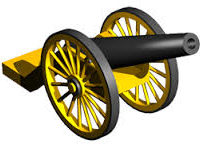Tidbits #2 – “What do you know about the canon?”

 “Messy.” That’s the best word that describes the context for canonization of the New Testament.
“Messy.” That’s the best word that describes the context for canonization of the New Testament.
Why so? It’s because that during the 1st, 2nd, and into the 3rd centuries many other writings were being produced that were modeled after the earlier Gospels, letters, and Acts.
As a result, disagreement among Christians persisted as to what should be considered authoritative, or canon, and what not.
Complicating matters further were these six internal and external forces.
Internal Forces:
Force #1 – If a worldwide mission was to be undertaken, it would require activity by more than simply the twelve closest followers of Jesus. But the danger then arose that a wider missionary proclamation would dilute or distort the information about Jesus. Preachers who were not reliably acquainted with the traditions about Jesus (see Acts 18:24-26) would have to be corrected. But reliable people for correcting others were becoming in short supply. Therefore, a more reliable method needed to be found to preserve the integrity of the Christian proclamation.
Force #2 – Most of the Christian community understood itself as an outgrowth and fulfillment of Judaism. Hence, they appropriated the authoritative writings of the Jewish community. This adoption demonstrated the value of written documents and hastened the production of a specifically Christian body of literature (see 1 Pet. 3:15-16).
Force #3 – The passage of time. Since many/most/all of the primitive Christians expected Jesus speedy return, the need to develop literature was not so important. But as time passed and the community grew larger, the appeal for corrections to errant teachings became more difficult. The only recourse was to comb the writings of the apostles to find hints about how problems were to be resolved.
External Forces:
Force #4 – A man named Marcion around the year A.D. 144 came to Rome and seems to have been the first one who formed a specifically Christian collection of authoritative literature. Unfortunately, Marcion advocated views that the Christians in Rome and elsewhere rejected. For instance, he claimed:
- Christ had come to redeem humanity from Judaism.
- Hence, the writings of Judaism had negative significance and were not authoritative.
- He only accepted the Gospel of Luke and the letters of Paul but purged from them any passages that spoke in a positive way about the Jewish faith, its law, and its prophets, including the first two chapters of Luke.
.
Thus, Marcion forced the Christian community to response and hastened the process of deciding what literature was indispensable and what was not.
Force #5 – Another man named Montanus, during the middle of the 2nd century, announced that with his appearance the final stage of Christian revelation and the time of the Paraclete (Holy Spirit; see John 14:16, 26; 15:26) was at hand. He traveled widely announcing the new age of the Spirit and the imminent end of the world. His Montanist movement produced a large body of literature (now lost) that they regarded as equally inspired and authoritative to the apostolic writings. They won many converts, among them the Church Father Tertullian.
Force #6 – Add to this the Gnostic movements of the 2nd and 3rd centuries.
Thus, the challenge for the Christian community became, how was the influence of these internal and external forces to be handled, countered, and corrected?
In summary, Marcion hastened the idea of a canon. Montanus hastened the idea of a closed canon, one to which no further books could be added.
It was in this context (or mess) that the “orthodox” Christian communities argued as to which writings could be regarded as authoritative, and belonged to a canon, and which did not.
What do you think?
[Much of the content herein is from Howard Clarke Kee, Understanding the New Testament: (Englewood Cliffs, NJ.: 1983, Fourth Ed.), 10, 368-373.]
